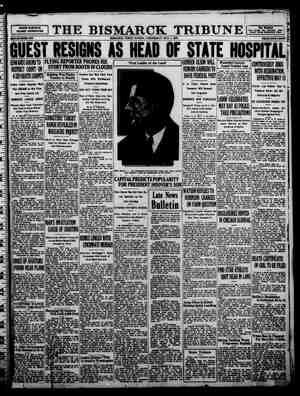Evening Star Newspaper, May 1, 1929, Page 41
You have reached the hourly page view limit. Unlock higher limit to our entire archive!
Subscribers enjoy higher page view limit, downloads, and exclusive features.
THE EVENING STAR. WASHINGTON, D. C., WEDNESDAY, MAY 1T, 1929. A FAR SEEING MEN! Far seeing Men Henry L. Doherty was one of them. He set out as a boy with $6 in his pocket . . to become one of the country’s leading public utility men. And it was saxd of him then, “On a clear day, be can see ten miles ahead!” Those same ten words can be applied today to ninety per cent of our successful men. Walter P. Chrysler, Henry Ford, Owen D. Young, Thomas Edison. Far seeing men. They looked ahead. Three thousand business leaders are doing just that this week in Washington. They are meeting together for five days at the Seventeenth Annual Meeting of the Chamber of Commerce of the United States. For five days they are surveying every branch of industry, every field of business. They are applying measuring sticks to economic tendencies. Using the microscope to examine and analyze minute .. but important .. details. And their findings will report the “hows” and the “whats” and the “whys” of vitally exciting business trends. Then the long look into the busmess future .. the use of the business telescope « » to answer the question, “When?” OR business men have learned to look - W ahead to the rim of the business horizon. That bank of clouds and flash of light- ning may mean an industrial storm . . or merely a passing squall. But which? Behind the fog of those trade barriers may lie concealed enough red ink to cover the books of a thousand established firms. And in the heart of that tornado of scientific research may be the padlocks for a thousand factories . . aswell as the ground plans for a thousand more. What is back of some particular rise or fall of the business barometer? Why does it develop so rapidly . . or slowly? How lasting will be its effect? Where will the blow of failure . . or the accolade of success . . fall? And .. when? How effective are codes of business practice? Is it true that as much as 80 per cent of all factories built prior to 1920 are uneconomically located to meet present day competition? Should rate-making by the Interstate Commerce Com- mission give preference to “‘distressed industries’? Should government enter the hydro-electric field com- mercially? Does group action by retailers and by wholesalers and retailers combined indicate ultimate chain organization and distribution? Will the individual wholesaler or retailer, operating independently, survive? How will the increasing compctmon between chains affect their growth? How flexible should a tariff be? Is there a sufficient supply of credit for the normal expansion of American business? What are the effects upon commerce and industry of the uses of credit on the stock market? How does *“no parking” affect retail business? What have been the recent developments in company pension plans, other retirement systems, state legislation relative to pensions? : These are only a few of the pertinent questions under discussion at the 17th Annual Meeting. These are only a few of the problems on which the combined efforts of three thousand men are centered this week in Washington. Of necessity, such work as this needs an interpreter. Nation’s Business, official publication of the National Cham- ber, was established to fill that need. In 1912, there were less than a thousand readers. Today, there are more than 300,000 regular subscribers. This growth and acceptance is proof that the need was there that the need is being met. And each year, as an extra dividend to its subscribers and available at cost for distribution among non-readers, Nation’s Business prints an Extra Edition. This Extra Edition reports the Annual Meeting’ of the United States Chamber of Commerce. Covering the findings and conclusions of a great busi- ness congress, carrying a fund of important and valuable information, painting a vividly clear picture of business history, the 1929 Extra Edition of Nation’s Business will this year take the message of the 17th Annual Meeting to busi- ness men in every branch of industry the country over. PUBLISHEP MONTHLY AT WASHINGTON BY THE ¥ CHAMBER OF COMMERCE OF THE UNITED STATES MERLE THORPE, Editor




